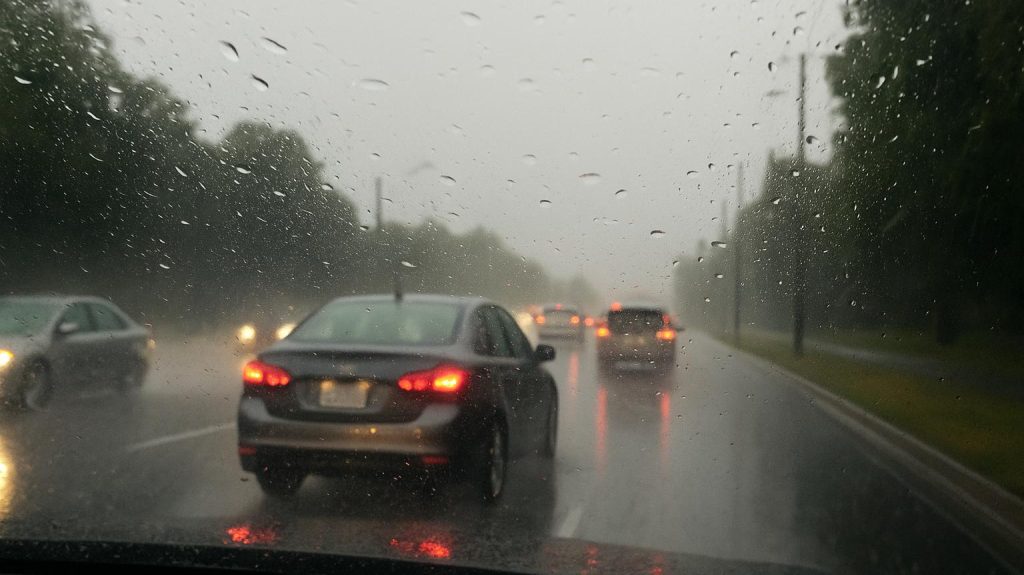When the skies opened up over London recently, bringing with them sheets of heavy rain that made visibility a nightmare, local drivers were getting a friendly but urgent reminder about a simple safety practice that could literally save lives.
The message was crystal clear: turn your bloody lights on! It sounds so basic, but apparently it’s still a lesson that needs repeating every time Mother Nature decides to throw a tantrum over southwestern Ontario.
Local online discussions revealed just how frustrating this ongoing issue has become for London drivers. One particularly vocal member of the community pointed out something that’ll make you shake your head – roughly one in every ten cars driving around London at night don’t even have their lights on, so expecting them to flip the switch during daytime rain storms? Yeah, good luck with that.
But here’s where it gets even more maddening. Those drivers who do remember to turn their lights on during heavy rain? Some of them are cranking up their high beams like they’re navigating through the Canadian wilderness instead of cruising down Richmond Street.
The reality check here is pretty straightforward – if you’re driving anywhere within London city limits, your high beams are basically useless. They’re not helping you see better; they’re just blinding everyone else on the road. One frustrated driver shared how they flashed their lights at a van to signal that their brights were on, only to get flashed back as if it were some sort of friendly highway greeting.
The confusion doesn’t stop there. Modern vehicles are equipped with automatic lights that are supposed to make this whole debate irrelevant, but here’s the kicker – people are deliberately turning them off. Half the cars you see driving around without lights during poor weather conditions are actually newer models with auto-light features that their owners have switched to manual mode.
There’s also the whole hazard lights debate that surfaces every time London gets hit with severe weather. Some drivers think throwing on their four-ways makes them more visible during heavy rain, but that’s actually counterproductive. Your hazard lights don’t make you any more visible than your regular headlights and taillights, plus they completely eliminate your ability to signal turns and lane changes.
The technical side of this issue gets a bit more complex when you dive into how different vehicles handle automatic lighting systems. Some cars will automatically turn on both headlights and taillights when the windshield wipers are activated, while others only respond to ambient light levels. This means during a heavy daytime rainstorm, your auto lights might not kick in at all, leaving your taillights completely dark.
For drivers who rely on their automatic lighting systems, there’s often a nagging worry about whether they’re doing everything right. The good news is that if your light dial is set to auto and you haven’t messed with it, you’re probably fine most of the time. The issue arises during those grey, stormy conditions when it’s not quite dark enough to trigger the automatic sensors but visibility is still seriously compromised.
The frustration among London drivers is palpable, especially when you consider how straightforward the solution actually is. During any kind of precipitation – whether it’s a light drizzle or a proper downpour – switching your lights from auto to the full-on position ensures that both your headlights and taillights are illuminated, making you visible to other drivers from both directions.
What makes this whole situation particularly aggravating is that it’s completely preventable. Every single close call, every moment of panic when a car suddenly materialises out of the rain without proper lighting, could be avoided if drivers just took two seconds to flip a switch. The conversation around this topic tends to resurface on local online forums whenever London experiences severe weather, with residents sharing their close encounters and reminding each other about this basic safety measure.

